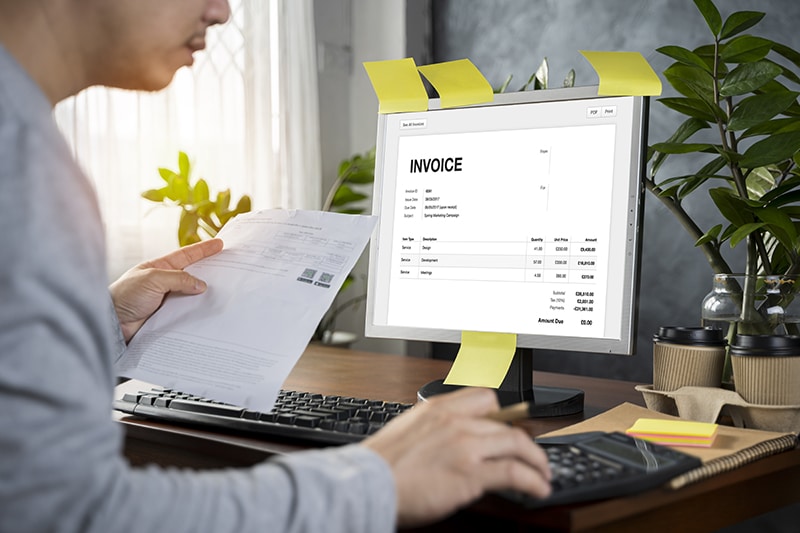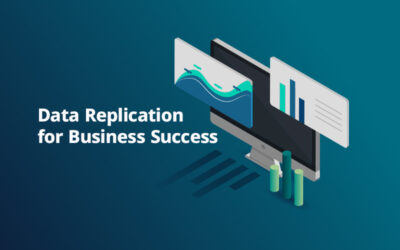In today’s fast-paced business environment, efficient invoice processing plays a prominent role in maintaining smooth financial operations and cultivating strong business relationships. Whether it is managing accounts payable or ensuring timely payments to vendors, optimizing the invoice processing workflow is important for organizations seeking to stay competitive. Embracing modern technologies, implementing standardized procedures, and fostering a culture of continuous improvement are all key components to streamline and enhance the invoice processing system.
Professional data entry services can support your invoice processing efforts, leading to better information management, improved operational efficiency, financial accuracy, and informed decision-making.
Here are some key guidelines to improve invoice processing, enhance accuracy, and gain better insights to make more informed financial decisions.
Automate Invoice Processing and Improve Efficiency
Digitizing your invoices is the first step to efficient invoice processing. Here’s how automating the invoicing process can transform the way you manage your accounts payable:
- Process Invoices Faster – Automation can considerably reduce the time needed to process invoices. In general, manual invoicing can take several hours or even days to complete, depending on the number of invoices and the complexity involved. On the other hand, automated invoicing can significantly reduce the time taken, with the entire process often completed within minutes or a few hours, even for a high volume of invoices.
- Reduced Errors – As manual data entry is prone to errors since it requires multiple layers of communication between different departments. Lost invoices, miscalculations, and process errors can happen at any time, especially when there are a large number of items to process. An automatic invoice processing system can eliminate errors and increase accuracy.
- Avoid Delays and Late Fees – Invoice processing involves dealing with multiple invoices from suppliers and vendors. At times, vendor agreements have late fees and penalties added, which will further add to additional costs. An automated invoice processing system can ensure faster invoice processing and avoid these issues.
- Enhances Visibility – Manual filing of documents makes it impossible to get a comprehensive view of the entire process. Lack of transparency can lead to several issues such as inefficient processes, under-reported expenses, and incomplete accruals, among others. Automated invoice processing offers increased visibility throughout the process chain.
- Improve Vendor Relationships – Late payments or incorrect processing of invoices can often result in strained relationships, which can have a negative impact on your business. Automatic invoice processing can help foster positive relationships by ensuring on-time payments.
- Free up Your Resources – The tedious manual work associated with invoice processing can leave the accounts payable division with less time to do other things. Automation speeds things up and relieves your staff of repetitive, manual work, enabling them to focus on other core tasks.
- Effective Monitoring and Reporting– With the increased transparency that automation brings in, your business can easily monitor expenses. Automatic invoice processing tools are equipped with extensive reporting and analytics capabilities that provide a visual representation of the data in real time that helps you make appropriate business decisions.
Strategies to Streamline Invoice Processing
Improving and managing invoice processing is crucial for maintaining efficient financial operations and ensuring timely payments.
Here are nine tips to streamline and enhance invoice processing
- Establish Clear Invoice Policies and Procedures – Develop clear and well-documented policies and payment terms for invoicing and payment processes. As you finalize the deals, it is important to communicate these policies to all relevant stakeholders, including employees, vendors, suppliers, clients and other dealers. They must know the contract terms, the services to be rendered, payment cycles, penalties for default, invoice templates (e-invoice, email, or other formats) and so on. Clearly define invoice submission formats, payment terms, and escalation procedures for discrepancies. Having a standardized approach ensures consistency and minimizes confusion.
- Automate Invoice Processing – As discussed above, implementing invoice automation software can significantly reduce manual tasks and human errors. Often, post-procurement, printing invoices, following up with departments or people for approvals, and eventually processing the payments are tasks that are tedious and error-prone. These tools can capture data from invoices, match them with purchase orders or contracts, and route them for approval electronically. In addition, automation not only speeds up the process but also improves accuracy and transparency.
- Standardize Invoice Format – Standardizing invoice format refers to creating a uniform and consistent structure for invoices across an organization or industry. Having a standardized invoice format offers numerous benefits, including improved efficiency, reduced errors, and enhanced professionalism. It is important to ensure that you have a standard format for all vendors or suppliers. While a clear invoice format may not guarantee payment, it prevents delays due to inconsistencies or missing information. The standardized invoice form must contain all relevant information. Include essential details at the top of the invoice, such as the company name, address, contact information, and logo. This information should remain consistent across all invoices. Assign a unique invoice number to each invoice for easy tracking and reference. Provide customer information, payment terms, list of the products and services, due date (last date of payment), pricing, total amount (along with tax calculations), discounts, if any, total amount and payment method.
- Embrace Electronic Invoicing (e-Invoicing) – Encourage vendors and clients to adopt e-invoicing whenever possible. E-invoices are digital invoices that can be sent and received electronically, eliminating the need for paper-based processing. E-invoicing speeds up invoice delivery, reduces errors, and helps maintain a more eco-friendly and cost-effective process.
- Use a Centralized Invoice Management System-Maintaining a centralized repository for all invoices, (whether physical or digital) is important. A robust invoice management system allows you to organize, track, and retrieve invoices efficiently. Cloud-based solutions are particularly beneficial as they enable secure access from anywhere, facilitating remote work and collaboration.
- Implement Regular Invoice Audits – Conduct regular, periodic audits of your invoice processing system to identify any inefficiencies, bottlenecks, or compliance issues. Analyze processing times, approval delays, and error rates. Use these insights gained to continuously optimize your invoice management workflow.
- Efficient Invoice Processing Follow-up – Regular follow-ups and reminders are necessary to ensure you or your clients do not end up paying late fees. If payment has not been processed, you can send a reminder a week before the due date. Reminder notes may need to be standardized with information relevant to the sales or purchase invoice. These reminders could be sent to the offices as a physical document or like e-invoices, as an email or an SMS. Ensure that the language in such reminders is courteous and professional.
- Leverage Data Analytics – Utilize data analytics to gain deeper insights into your invoice processing performance. Analyzing data can help you identify trends, potential cost savings, and areas for process improvement. For example, you can analyze vendor performance, late payment patterns, or opportunities for early payment discounts.
- Ensure Strict Timeline – You must ensure there are no delays in billing or invoicing. Whether it is billing at your end or receiving bills, it is important to establish a strict timeline of when the process begins. This can bee stablished based on the time taken to verify the invoice, receive approval, issue a check or transfer the money. As consistency is always important, it is essential to devise a schedule that gives you enough time to follow the process before releasing payments.
An efficient and streamlined invoice processing system can significantly impact an organization’s financial health and operational efficiency. By adopting the best practices discussed in this article, you can revolutionize your invoicing workflows and achieve new levels of financial excellence. By continuously refining their invoice processing strategies, organizations can foster growth, strengthen relationships, and secure a prosperous future. Many organizations are partnering with business process outsourcing companies to implement effective invoice processing systems. By leveraging outsourced data and document management services, businesses can streamline their invoice processing workflows, reduce manual effort, improve accuracy, and gain valuable insights into their financial operations. This, in turn, leads to increased efficiency, cost savings, and enhanced overall business performance.
MOS provides cost-effective, hassle-free document management solutions for businesses in diverse sectors.




